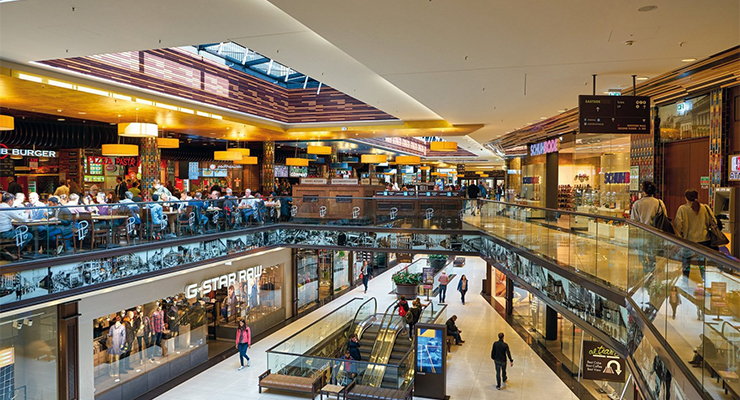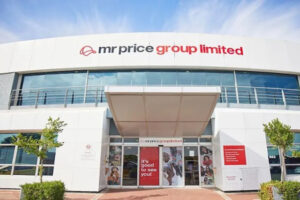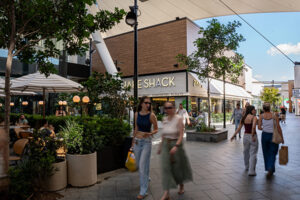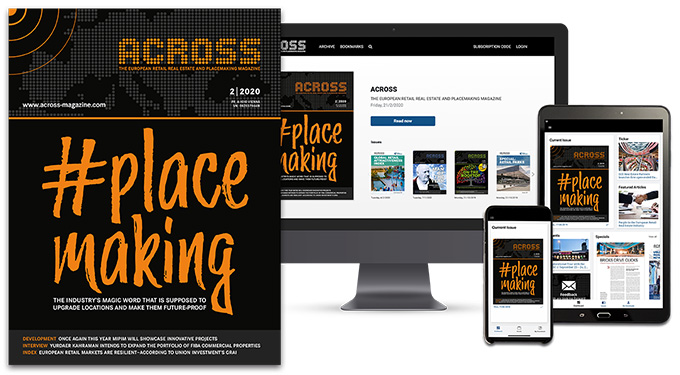“Revitalizing shopping centers ensures that they remain relevant to people’s lives,” explains Lena Knopf, EHI expert and author of the latest Shopping Center Report. “In this respect, there is significantly more movement in the market than one might expect when simply looking at the number of centers.”
At 506, the number of shopping centers in Germany is unchanged compared to the previous year. This corresponds to a total area of approx. 16.7 million or a retail rental area of approx. 13 million sq m. Statistically speaking, there are around 167,000 people per center or around 500 customers per 100 sq m of shopping center space.
In 2024, revitalizations were completed in eleven shopping centers – a further 38 centers are currently undergoing revitalization. The background, type and scope of the measures taken vary and range, for example, from complete repositioning, as in Loop5, to the redesign of partial areas, as in Huma St. Augustin. In some cases, a compression of retail space in favor of other uses such as offices or medical practices is planned, as in Boulevard Berlin or Rheinpark Center Neuss. Energy modernization is also high on the list of priorities. In many cases, various leisure facilities and gastronomy play a special role, shares the report.
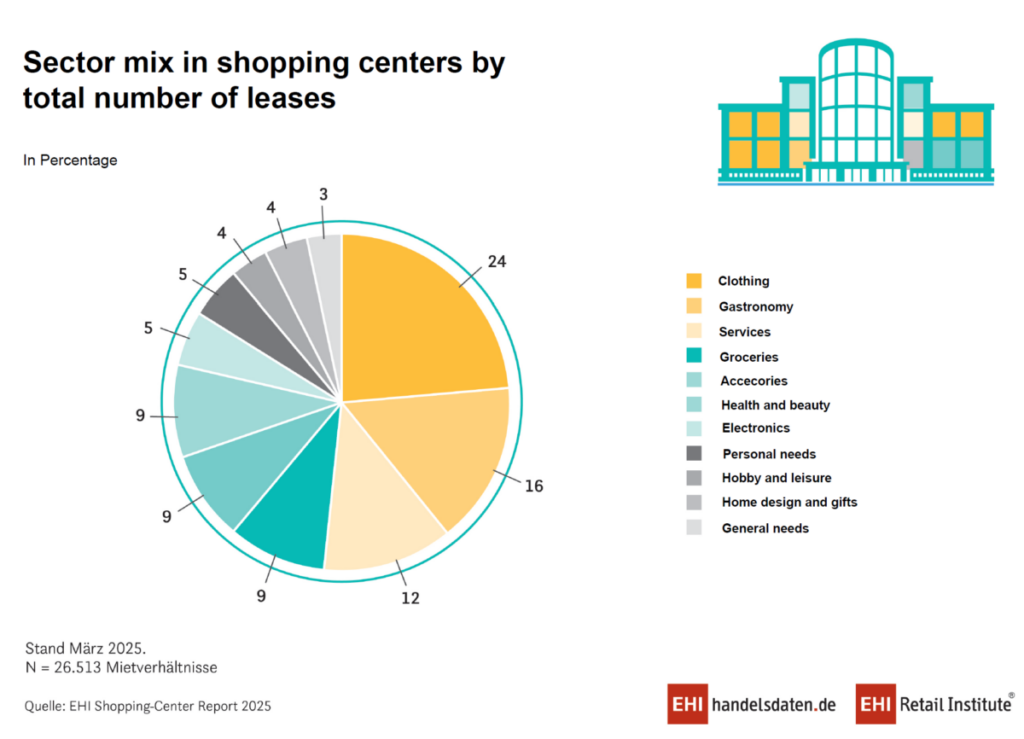
Customer Experience and Gastronomy and the core of Revitalizations
During revitalization measures, the positioning of the shopping center is always reviewed and adjusted if necessary. Leisure aspects often become more of a focus; in some cases, centers become destinations for family activities. Loop5 in Weiterstadt has integrated a water playground, carousel, climbing park and freefall tower as well as a new food court. Since its revitalization, the Rhein-Neckar-Zentrum now has a new restaurant with outdoor dining, a trampoline hall and an indoor skydiving facility. Gastronomy is becoming increasingly important in many centers, as demonstrated by the “Glorious Garden” rooftop bar on the fifth floor of the Lago in Constance, for example. Around 12% of the total of 26,513 leases in all shopping centers together are in the food service sector.
City Center Locations Dominate
In total, 47% of centers are located in inner city locations, 38% in city districts and 15% in suburban locations or greenfield sites. The latter locations often date back to the 1990s, but hardly play a role in project developments today. If we only look at the 48 new center openings in the last ten years, two thirds of these are located in city centers and around one third in city districts.
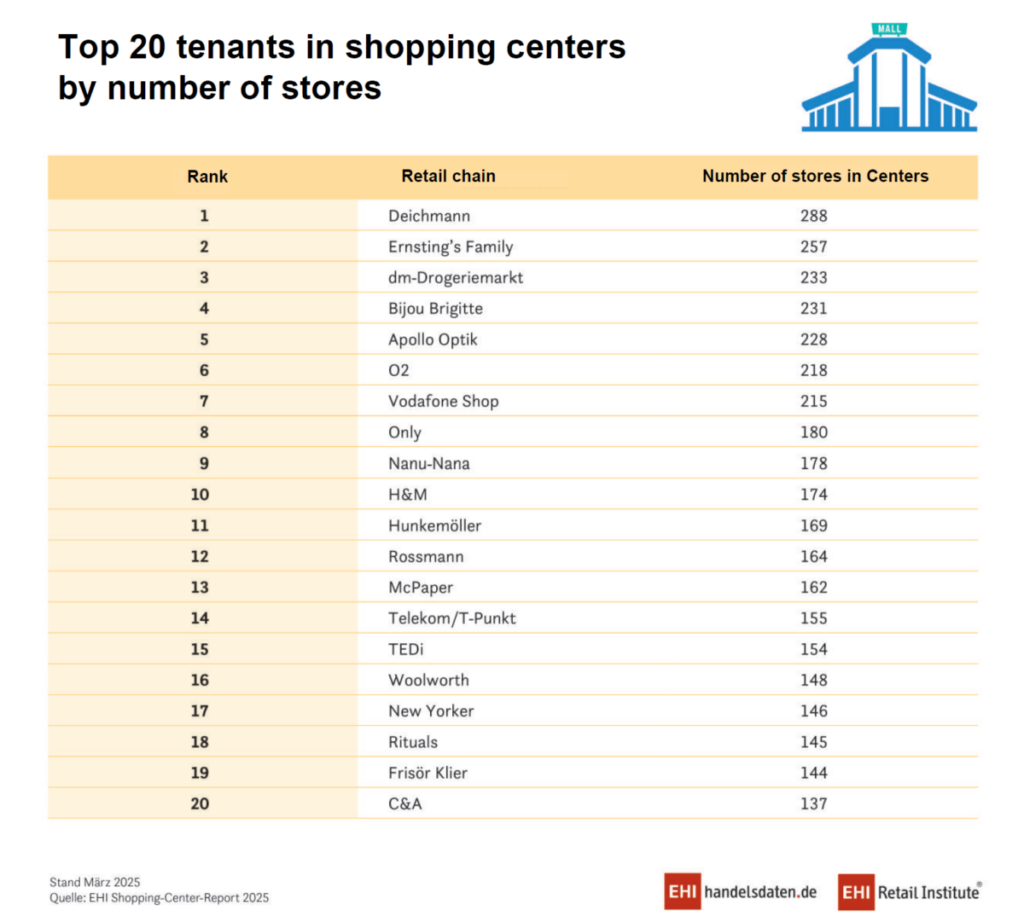
Chain Stores in Transition
There are still seven sales divisions that have more than 200 stores in shopping centers; the order of the top three consisting of Deichmann (288 stores in centers), Ernsting’s Family (257) and dm-Drogeriemarkt (233) remains unchanged. After that, there have been a few shifts. For example, o2 with 218 stores (- 15 compared to the previous year) and Vodafone with 215 stores (- 8) have thinned out their branch networks in shopping centers somewhat, but are still among the top ten. Douglas (- 5) is just out of the top 20, as is Depot following its insolvency and the significant thinning out of its store network. The two newcomers Tedi (+ 14 stores) and Woolworth (+ 27 stores) are setting an intensive pace of expansion (not only) in shopping centers.
Fore more information on the German language report, click here.
